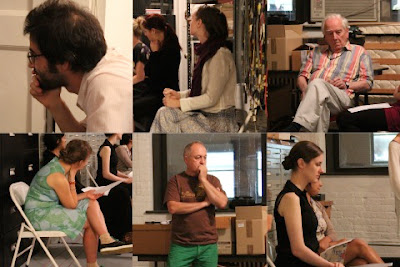Personal Lives – In the Home of Robert Ashley

I studied percussion with the same teacher for 10 years as a young musician and learned many important things. But none of the technical challenges of playing an instrument impacted on me as an artist as much as the first time I visited my teacher’s home. I went there with several of my fellow students and afterwards there was much discussion of the cool instruments and the record collection. But what impressed me most was that I had seen what an artist’s life was like up close. And it wasn’t as scary as I thought it would be. I reflected on this feeling after having learned of the death of Robert Ashley last night, and it occurred to me that, despite my relatively limited interaction with Bob, he had confirmed some of these same ideas. Bob was a walking embodiment of his work—thoughtful, sharp, digressive and funny. And from my point of view, he lived his art with dedicated flair of purpose and exploration.
I have always been an admirer of Bob’s work. I remember the first time I happened upon Perfect Lives in the university library and was awestruck at his strange vision of the world. Especially amidst the structured environment of a music conservatory, his articulation of a warped world, floating right there in the middle of consciousness, but somehow still inviting, was a revelation. I learned more about Bob’s work as a student of Alvin Lucier, and the stories of their musical adventures together formed a foundation for some of the collective work I have made a big part of my life as an artist.
But I got the full ‘Bob’ experience when I was asked to be one of the performers in a re-staging of his classic work ‘That Morning Thing’ at the Kitchen in 2012. The performances were odd and sublime, and the group of people involved will be friends for a long time to come. But what will stick with me is walking for the first time into Bob and Mimi’s loft on Beach Street in Tribeca. This was a loft like the ones that have been written about in the history books about experimental music in the 70’s–large, industrial and somehow reeking of the kind of independent determination that has shaped the last 50 years of American music. In the ‘studio’ there were large cabinets full of scores and special equipment for various pieces, there was inspiring art on the walls, a small kitchen, rows of microphone stands and in the middle of the room a tent set up with a mixing board and recording equipment. The living area of the building, on a different floor was similarly elegant, art from peers and family lining the walls, a well-used easy chair and an inspired warmth that said ‘come right in, we have nothing to hide.’
Bob invited all of the performers in, and in the last years of his life seemed to embrace the reality that his work has had a huge impact on a younger generation of artists. For me, the impact is musical and personal. I know that he was a complicated person, but he also was a walking lesson in how to keep your work close to you, how to tell stories that resonate from within with the confidence that they too will resonate with others. It takes courage and a certain amount of hard-headedness to live the kind of life that Bob did. I, for one, am deeply grateful for my brief encounters with the man.
